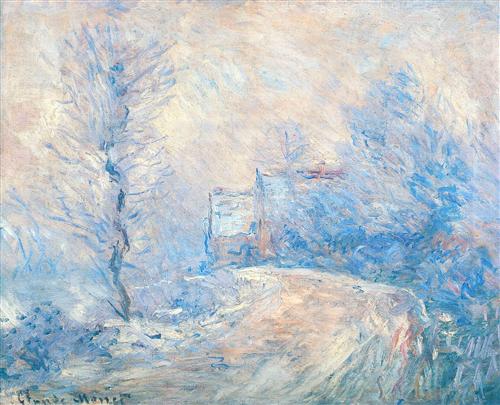It is March, and I cannot remember this winter’s first snow, though I am sure I entered its white hive. By now it has been replaced. Weather comes and goes; we enter and exit. Today I have been “out” of weather (indoors), “in” weather (outdoors), back “out” of weather, and so on. This movement between out and in reminds me of the shifting relations—between owner and dog, literal and figurative, holding-on and release—that unfold in Carl Phillips’s poem “White Dog.” Here are the first two stanzas:
First snow—I release her into it—
I know, released, she won’t come back.
This is different from letting what,already, we count as lost go. It is nothing
like that. Also, it is not like wanting to learn what
losing a thing we love feels like. Oh yes:
I am always surprised by the moment of release, set off by dashes, in the first line. I wonder what kind of release this is. Unfastening a leash or unlatching a gate with the foreknowledge that the dog will not return? A gesture of letting go?
“White Dog” enacts the owner-speaker’s relation to the released dog. It accumulates assessments as it moves toward a conclusion buffered by simile (“It’s as if I release her / because I know”). In the poem’s first two stanzas, the owner discards two possible motives for releasing the dog: she is not “count[ed] as lost,” nor is the release mere inquiry. Negative similes appear both times: “It is nothing like”; “it is not like.”
A bare assertion of love stands at the beginning of the third stanza, routing back to the released dog, but also pushing toward the owner. Loving another (the dog) necessarily involves the construction of a self (the owner) who professes this love:
I love her.
Released, she seems for a moment as if
some part of me that, almost,
I wouldn’t mind
understanding better, is that
not love? She seems a part of me,
The dog “seems as if some part of” the owner who might be “better” understood, but then is recognized as not the owner, and also not human. The dog appears “suddenly” distinct, and “seems entirely like what she is: a white dog.” In asserting the dog’s distinctness, the owner still inflects the literal with the figurative, just as we approach others through the self. The dog is both “a part of” the owner and “entirely like what she is.” By acknowledging that there are mysterious parts of him or herself that he or she would “almost” like to understand better, the owner also suggests that there can be no claim to total understanding of what it is like for the dog to be herself. Here also the dog is no longer abstracted by the snow, but visible “against” it:
and then she seems entirely like what she is:
a white dog,
less white suddenly, against the snow,who won’t come back. I know that; and, knowing it,
I release her. It’s as if I release her
because I know.
This poem does not attempt to represent the dog’s world, nor does it ignore the fact of the dog’s own subjectivity. The owner-speaker instead remains keenly aware of the limitations of his or her own position, and this supports the clarity of the poem’s stopping point. Furthermore, this awareness acts as a kind of formal constraint that allows the poem to achieve a rigorously modest aim: to constellate the responses of one self (human) to another (animal), and finally remind us of the tender powers of release.
“White Dog” appears in Phillips’s collection, The Rest of Love (Farrar, Straus, and Giroux, 2004).
Image: Painting by Claude Monet, The Entrance to Giverny Under The Snow, 1885.

